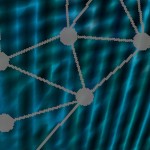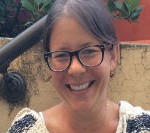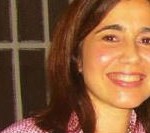Neldson Marcolin | Revista Pesquisa Fapesp – Issue 223 – September 2014 Oct 2014

ICONOGRAPHY DIVISION, NATIONAL LIBRARY. Ticuna Indians in the kitchen of an Indian village; the clothing worn by the man at right indicates loss of native identity
The charm exuded by the lush natural setting of the Amazon Region has consistently earned it a place on the itinerary of explorers and naturalists of every nationality. In the 1860s, drawings, engravings and paintings of the region were gradually replaced by photography, which had been developed by several inventors in the first three decades of the 19th century. The first photographic images of indigenous peoples of the Amazon were taken in 1867 by German photographer Christoph Albert Frisch, on assignment from the Rio de Janeiro-based Casa Leuzinger. The Swiss owner of that establishment, George Leuzinger—one of the first people to produce, edit and sell photos in Brazil—intended to sell them there and abroad.
There are stories about visits to the area by other photographers before the arrival of Albert Frisch (1840-1918). Charles DeForest, an American, spent time there in 1843 and was thought to have taken a few daguerreotypes, though none have ever been found. Walter Hunnewell took anthropometric photos of mestizos in 1865 and 1866, at the request of Swiss zoologist and geologist Louis Agassiz. But Frisch appears to have followed a distinct itinerary to document the Amazon. He departed from Manaus for Letícia, Colombia, on the border with Brazil, probably in a steamship. From there, he traveled down the Solimões River in a boat rowed by others until he came to the Negro River. Along his 1,100-kilometer journey, he stopped to take photographs in places such as Tabatinga, São Paulo de Olivença, Tefé and Manaus.
Frisch employed the wet collodion technique, which used a mixture of ether, alcohol and nitrocellulose that adhered to a glass plate (the negative medium), and photosensitive silver salts would then cling to the plate. The life of a photographer in those places was difficult. The plate had to be prepared with all of these chemicals in the dark and then inserted into the camera. Once the photo was taken, the material had to be developed quickly, before the collodion dried. To do this, Frisch improvised an enclosed laboratory directly on the boat or in a dark tent. The quality of the images, however, was excellent. When the prints were made, back in Rio de Janeiro, several photos of native people, all of whom were acculturated, were blended with other images showing only nature in the background, to give the impression that they were always in the jungle. The mestizo population, life in the small villages, plants, and animals were all painstakingly recorded in a 98-photo essay.

ICONOGRAPHY DIVISION, NATIONAL LIBRARY. To obtain a sharp image, the subject had to remain still. Animals such as the alligator shown below were photographed after death
Frisch’s photos were sold in Brazil and Europe for many years, and were valued by scholars in the fields of ethnography, biology and botany. But little was known about them or their author. In the late 1990s, Mônica Carneiro Alves, a librarian at the National Library (BN) in Rio, found a 12-page booklet among the institution’s rare books, written in French and describing Frisch’s photos in detail. “The objective of the photography expedition went far beyond showing indigenous or riverine people. There are, for example, 35 plant species mentioned in the captions for 33 photos, most of them also giving their scientific names,” says Joaquim Marçal Ferreira de Andrade, a BN researcher and professor at Pontifical Catholic University in Rio (PUC/RJ). The author of a 2007 article on the discovery, Andrade believes that despite George Leuzinger’s distinctly commercial objectives, Frisch followed the same exploratory path as the naturalists who had spent time in the region.
The principal information on the photographer, such as the discovery of his first name and his movements between Rio, Paris, Munich, Berlin and New York, was compiled by Frank Stephan Kohl, a German professor at the Ibero-American Institute (IAI) in Berlin. He published the original texts in 2005 in the journal Studium, a publication of the University of Campinas (Unicamp), and in 2006 in Cadernos de Fotografia Brasileira, published by the Moreira Salles Institute.
For related articles about Amazon, in English, Portuguese and Spanish see:
Lima, Nísia Trindade and Botelho, André. “Malaria as a disease and as a cultural perspective in Carlos Chagas’ and Mário de Andrade’s travels to the Amazon.” Hist. cienc. saude-Manguinhos, Set 2013, vol.20, no.3, p.745-763. ISSN 0104-5970
JUNGHANS, Miriam. “Emília Snethlage (1868-1929): a german naturalist in the Amazon.” Hist. cienc. saude-Manguinhos [online]. 2008, vol.15, suppl., pp. 243-255. ISSN 0104-5970. http://dx.doi.org/10.1590/S0104-59702008000500013.
Cueto, Marcos and Puente, José Carlos de la “Vida de leprosa:the testimony of a woman living with Hansen’s disease in the Peruvian Amazon, 1947.” Hist. cienc. saude-Manguinhos, 2003, vol.10, suppl.1, p.337-360. ISSN 0104-5970
Knight, David Marcus. “Travels and science in Brazil.” Hist. cienc. saude, 2001, vol.8, p.809-822. ISSN 0104-5970
For more articles about the Amazon, click on Scielo search page.








